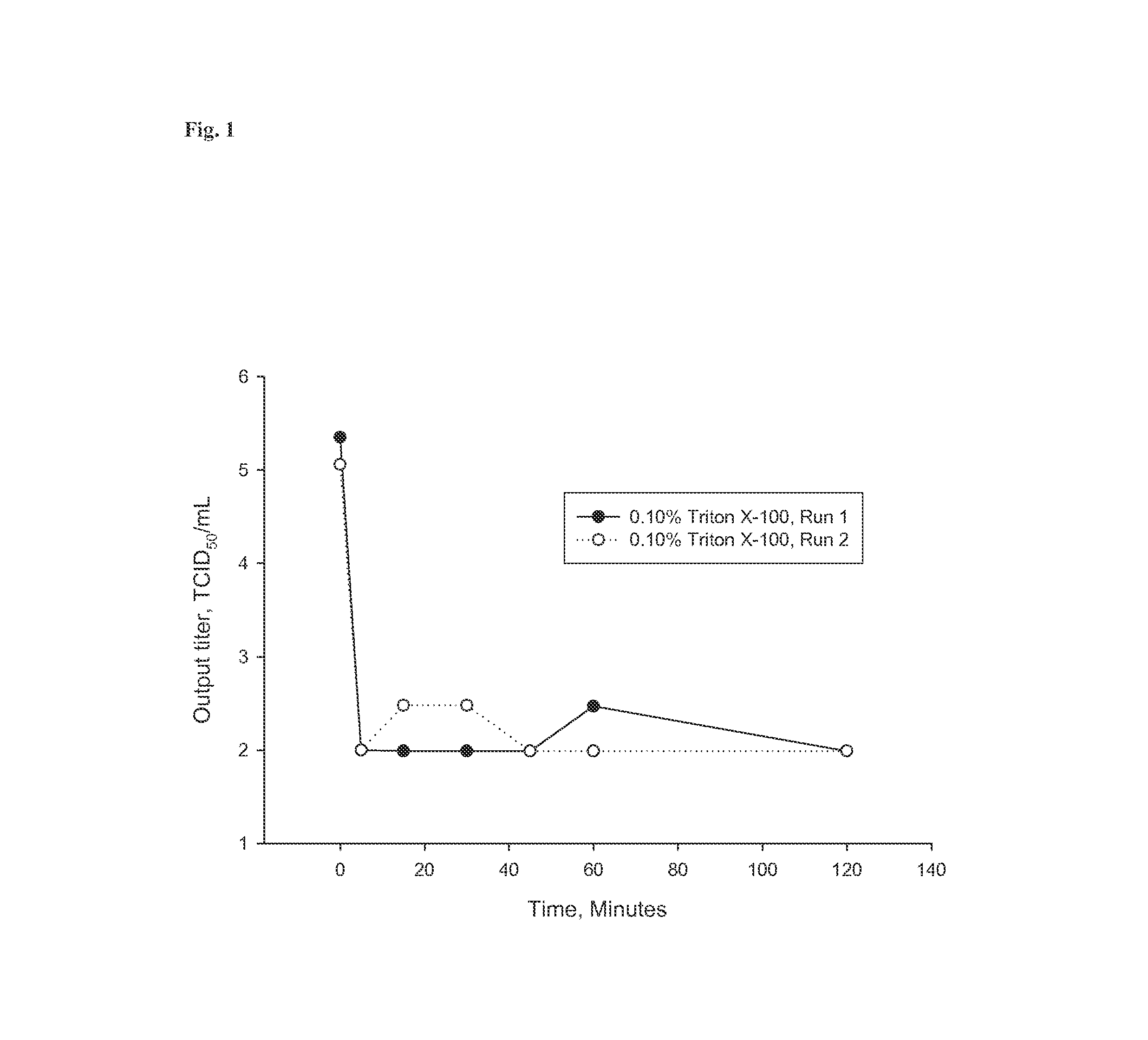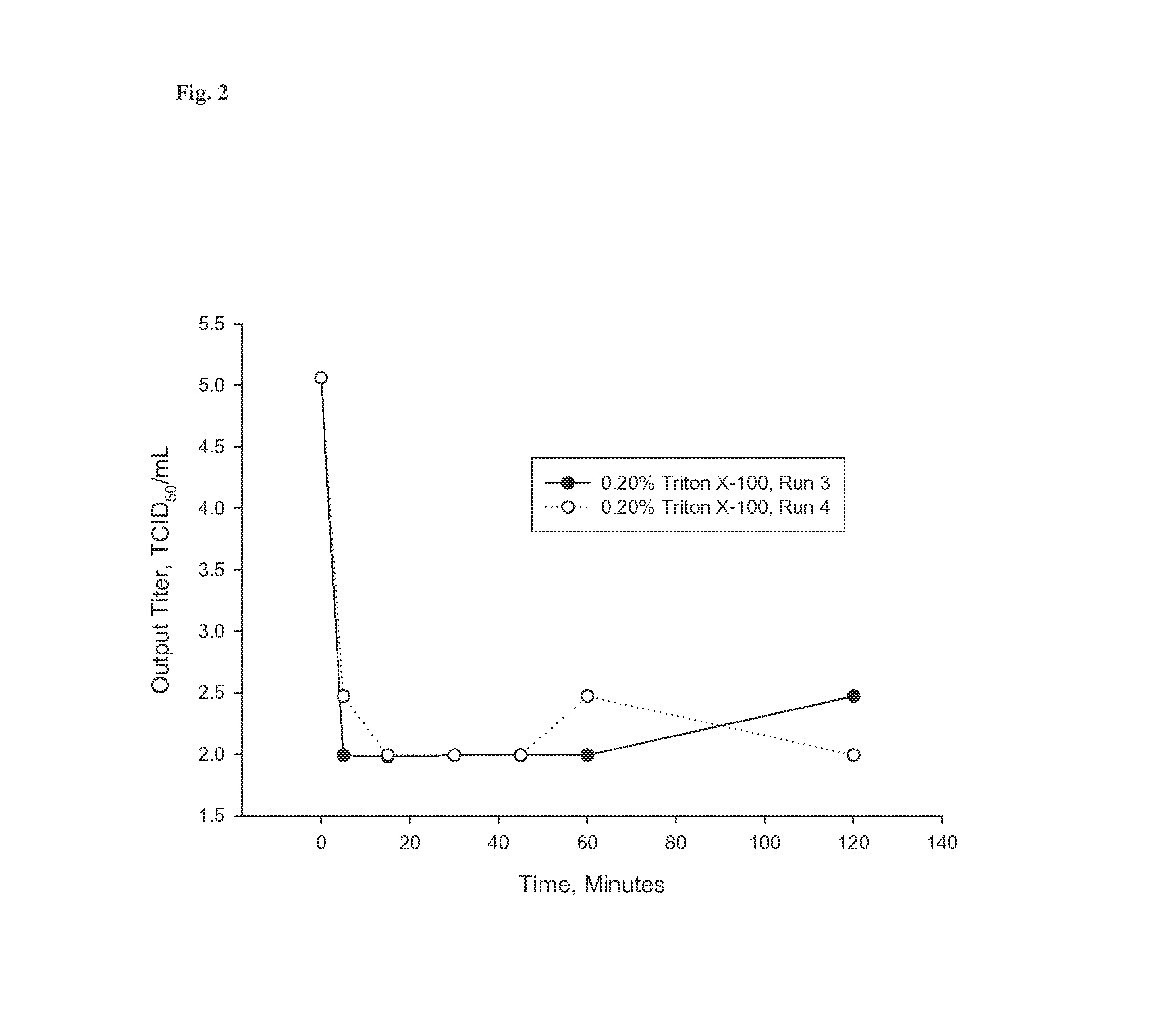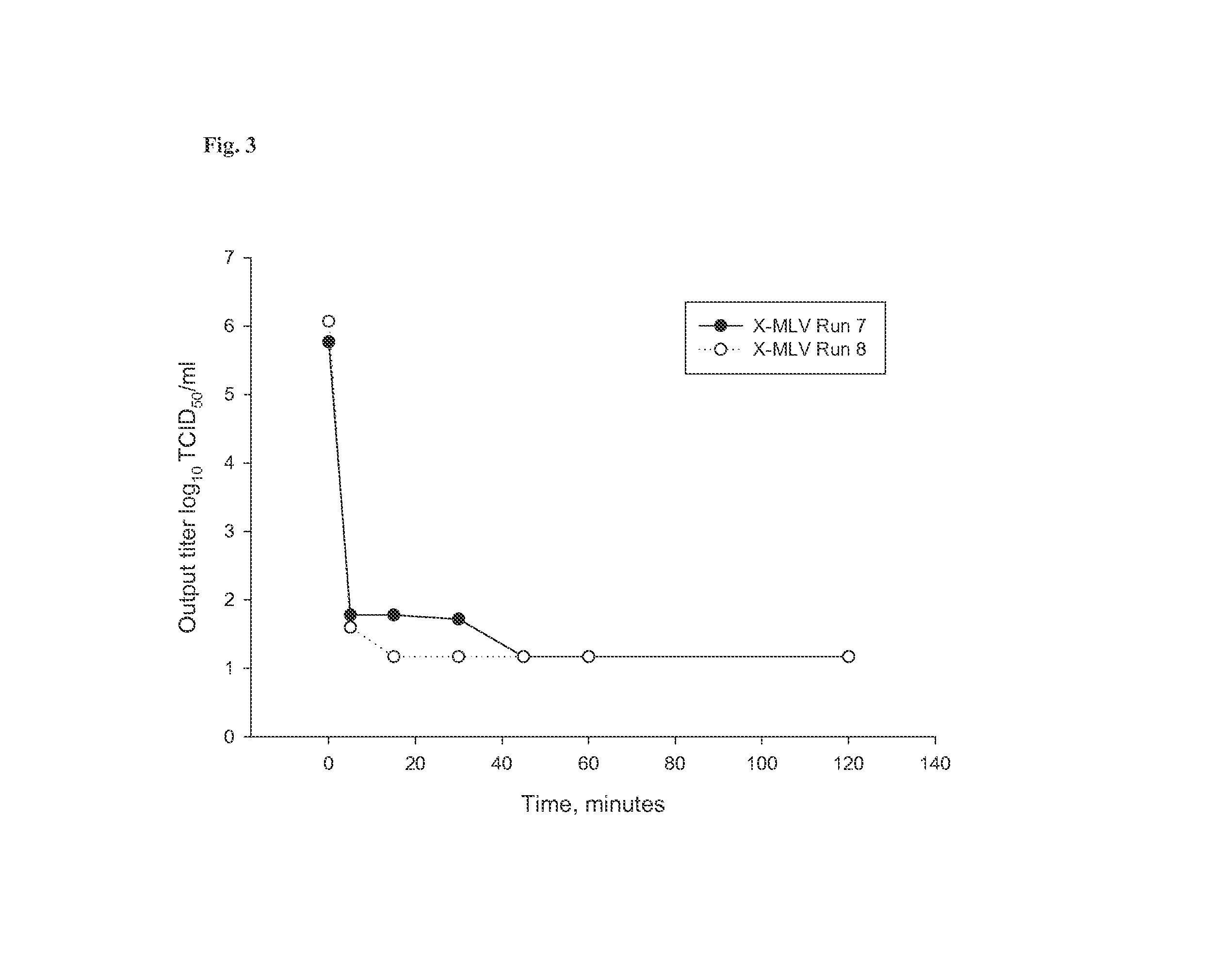Arginine inactivation of viruses
a technology of arginine and virus, which is applied in the field of inactivation of viruses or reduction of infectious virus titers, can solve the problems of contaminating protein samples, aggregation of products, and unsuitable or optimal protein products, and achieves the effect of effectively inactivating or reducing infectious virus titers
- Summary
- Abstract
- Description
- Claims
- Application Information
AI Technical Summary
Benefits of technology
Problems solved by technology
Method used
Image
Examples
example 1
TRITON® X-100, Low pH, and Arginine Inactivation of X-MLV in Preparation Samples of Recombinant Antibody GE2-Fcγ-Fcε
[0065]Virus inactivation kinetics obtained by exposure to low pH, TRITON® X-100 and arginine were studied using sample process intermediates of a recombinant antibody designated GE2-Fcγ-Fcε. The process intermediates used in these inactivation studies are shown in Table 1. All studies were performed at 2-8° C.
[0066]For the TRITON® X-100 inactivation studies, TRITON® X-100 was added to the GE2-Fcγ-Fcε clarified conditioned media (CCM) at concentrations of 0.10% (v / v) and 0.20% (v / v). MABSELECT™ (GE Healthcare Bio-Sciences Corp., Piscataway, N.J., USA) Protein-A chromatography eluates containing GE2-Fcγ-Fcε with the pH adjusted to 3.7 or 3.9 were used as the starting material for the low pH viral inactivation studies. Neutralized MABSELECT™ Eluate buffer (1.0 M arginine-HCl, ˜5 mM Tris, pH 7.3 (+ / −) 0.5) and neutralized MABSELECT™ Eluate buffer containing GE2-Fcγ-Fcε wer...
example 2
Arginine and Glycine Virus Inactivation Studies with X-MLV, SuHV-1 and MMV
[0079]To further characterize the virus inactivation kinetics of arginine, and identify viruses inactivated by arginine, three viruses were tested (X-MLV, SuHV-1 and MMV) in the presence of high concentrations of two amino acids (arginine and glycine) at neutral pH. All studies were performed at 2-8° C. Experimental parameters of these studies are shown in Table 14. Each experiment was performed in duplicate.
TABLE 14Buffers and Viruses Evaluated in the Virus Inactivation StudiesStudyRunStudy###Buffer CompositionVirus11, 215 mM Tris + 0.10MX-MLVArginine-HCl (pH 7.0)23, 425 mM Tris + 0.50MX-MLVArginine-HCl (pH 7.0)35, 635 mM Tris + 1.0MSuHV-1Arginine-HCl (pH 7.0)47, 845 mM Tris + 1.0MMMVArginine-HCl (pH 7.0)5 9, 10550 mM Histidine + 50 mMX-MLVCaCl2 + 1.0MArginine + 0.04% Tween-80 + 50%Propylene Glycol (pH 7.0)611, 12650 mM Histidine + 50 mMSuHV-1CaCl2 + 1.0MArginine + 0.04% Tween-80 + 50%Propylene Glycol (pH 7.0...
example 3
Effect of Arginine Virus Inactivation on Product Quality
[0090]To examine the effect of arginine virus inactivation on the product quality of therapeutic biological products, four protein products were incubated with a high concentration of arginine. The protein products were obtained as final process intermediates and incubated for 24 hours at either a low pH of 3.7 or an arginine concentration of 1.0 M by bolus addition. Protein product aggregation was determined by size exclusion chromatography. The results are shown in Table 24.
TABLE 24Aggregate Formation of Therapeutic BiologicalProducts Incubated at Low pH or High ArginineConcentration Measured as % Monomer% MonomerProtein ExaminedT = 0 hr% Monomer T = 24 hr(Protein type)ControlControlLow pHArginineFIX (Fusion protein)99.699.250.292.9Lingo (mAb)99.899.827.099.1GE2 (Fusion protein)97.197.273.098.4TWEAK (mAb)99.399.299.399.0
[0091]Aggregate levels for protein products Lingo, GE2 and TWEAK were the same or better than the control a...
PUM
 Login to View More
Login to View More Abstract
Description
Claims
Application Information
 Login to View More
Login to View More - R&D
- Intellectual Property
- Life Sciences
- Materials
- Tech Scout
- Unparalleled Data Quality
- Higher Quality Content
- 60% Fewer Hallucinations
Browse by: Latest US Patents, China's latest patents, Technical Efficacy Thesaurus, Application Domain, Technology Topic, Popular Technical Reports.
© 2025 PatSnap. All rights reserved.Legal|Privacy policy|Modern Slavery Act Transparency Statement|Sitemap|About US| Contact US: help@patsnap.com



